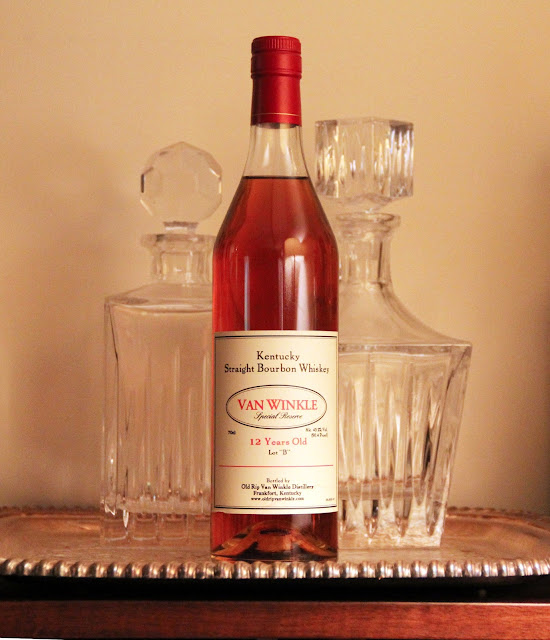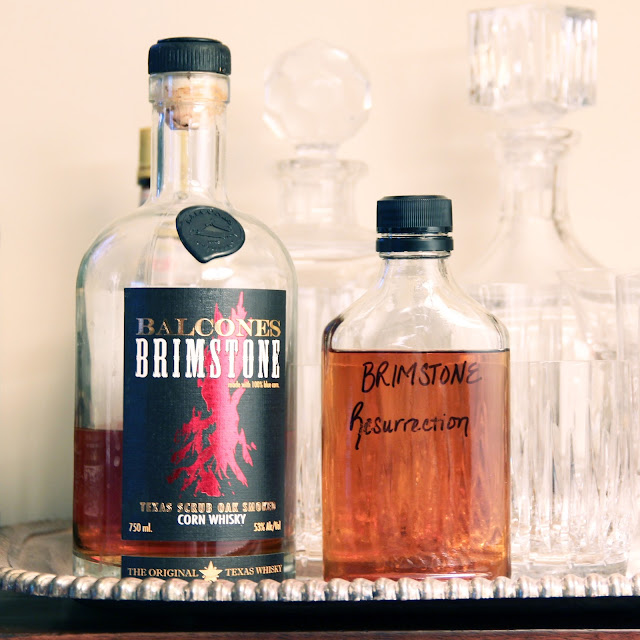July 30, 2013
Beast Masters Vol. 1 - Review: A.H. Hirsch Reserve Straight Bourbon Whiskey 16 Year Old
The Best Beast You'll Never Drink
Welcome to Beast Masters, SmokyBeast's tour of the world's most impressive private whiskey collections.
 |
| Señor Colton, BeastMaster |
While most of what is acknowledged to be the world's greatest whiskey is completely unattainable, it lives on in the cellars of private collectors. This week SmokyBeast had the privilege of a private tasting from the collection of Jonathan Colton. Jonathan started collecting in the late 1990's, during the height of the "bourbon glut" when some of the best juice in history was readily available for those with the will and the means. Today he boasts a top-notch bunker of world-class bourbon, and he was kind enough to pour us some of the highlights.
Jonathan poured us so many phenomenal whiskies that to do this story justice, we had to split them into three parts. The first part is dedicated to a single beast: A.H. Hirsch Reserve Straight Bourbon Whiskey. The second episode will be a tour through the entire Pappy Van Winkle line, all from original Stitzel-Weller bottlings. The third installment will be a tasting of the Buffalo Trace Antique Collection from the early 2000's (and it may have a few surprises thrown in for good measure!).
So with over a dozen drool-inducing bourbons in Jonathan's tasting, why you may ask are we only featuring one in this first review? Well to put it simply, because it's widely acknowledged as the best bourbon in the history of the world. It was the subject of the non-fiction work "The Best Bourbon You'll Never Taste" by Chuck Cowdery. Rather than trying to paraphrase Chuck's vast expertise on the subject, here are a few excerpts from the text:
In the spring of 1974 a batch of bourbon whiskey was distilled in Pennsylvania at a small distillery near Schaefferstown. The distillery went out of business and the whiskey was ‘rescued.’ Some was bottled and sold right away and the rest was allowed to continue aging in Kentucky [...] As the story goes, a former executive of Schenley Distillers Corporation acquired the whiskey initially and launched the brand. His name was Adolph Hirsch and he named the product after himself. [...] Adolph Hirsch’s 400 barrels of bourbon, minus 15-20 years of evaporation, translated into about 4,244 cases of A. H. Hirsch Reserve Straight Bourbon Whiskey.
A. H. Hirsch Reserve Straight Bourbon Whiskey exhibits everything bourbon lovers love about bourbon: rich, dark, caramel and vanilla, chocolate and coffee, sweet but not too sweet, full-flavored but not heavy, balanced with just the right amount of smoke, and spices like anise and clove.Chuck's book chronicles the long and winding tale of these barrels as they made their way from the original Michter's (aka Pennco) Distillery in Pennsylvania to be bottled by Julian van Winkle in Kentucky. (No, the Michter's you can buy today is not the same, it shares only the name.) It's undoubtedly a greater level of detail about the history and provenance of a liquor that we'd ever even dreamed. The take-away is that, while simple on the surface, there are so many variables that go into the production of a bourbon - from the recipe to the season, to the production method, to the warehouse, to the care and transport, to the age - that no one really knows what makes one bottle so much better than the next.
Tasting Notes
So this hooch could not be more over-hyped if John Lennon and Jimi Hendrix reunited for a posthumous reunion concert in its honor. The only remaining bottles sell for $650 a pop, and chances are that they won't even be available that much longer at any price. Could anything be worthy of these outrageous expectations? We read Chuck's book, looked up all the online reviews we could find, got our taste buds primed to the point of ecstasy, and geared up for our first sip.
Appearance: Translucent tree bark.
Nose: Eagerly, weak-in-the-knees-y, we impatiently wait the necessary twelve minutes for the glass to open up (however tempting, gulping this down straight out of a newly opened bottle would be a travesty). Our noses are repeatedly shoved into the glass with all the delicacy of a 1980's cocaine freak.
The fragrance is so subtle. There's definitely orange rind. There's definitely cloves and honey. Raisins, nutmeg, walnuts, brown butter. There are some spices going on - cinnamon, crushed pepper, mint. It all runs together into a sort of sweet musk... Julep Cologne.
Palate: Well frankly, we just weren't prepared for the body. There's a quality to it that's extremely difficult to put into words. It's not so much the flavor. It's actually more of a chemical thing that happens when it hits your tongue. It's like an effervescence, like the liquid instantly evaporates upon contact with the tongue and spends it's time floating somewhere in the middle of the mouth. It's SOFT, so full of flavor and yet so unbelievably delicate. This was what we noticed before even tasting different flavors. The TEXTURE was so unusual, so amazing, and so rare.
The flavors are fruitcake, wheat, more of the nuts and chocolates, and that old-timey warm mellow hint of wood.
Finish: Lasting, but again very subtle. All the spices and fruits continue their graceful float above the surface of the mouth, drifting slowly away, leaving a hint of wood and leather.
Review
Rarely in life has anything so completely lived up to this ridiculous a level of anticipation. $500 dinner for two at Gordon Ramsay's restaurant - vile. War & Peace - like reading paint dry. The King's Speech - spoiler, he wasn't much of a talker. A.H. Hirsch was one of those magical moments when you hype and hype and dream and dream, yet in the moment you're still completely unprepared for how awesome the experience actually is. Think sky-diving. Think Star Wars. That's the kind of rodeo we're talking about. What Port Ellen did to us for scotch, Hirsch has done to us for bourbon. Even more so. If you ever get the chance, treat yourself to this experience before it's too late. It's a real piece of history and won't last forever.
Thanks to Jonathan for this unique treat. Come back in a few weeks for BeastMasters Vol 1 Part 2 where we dive into the miraculous beast that goes by the name Pappy!
Click here to continue reading BeastMasters Volume 1, Part 2...
/sb























